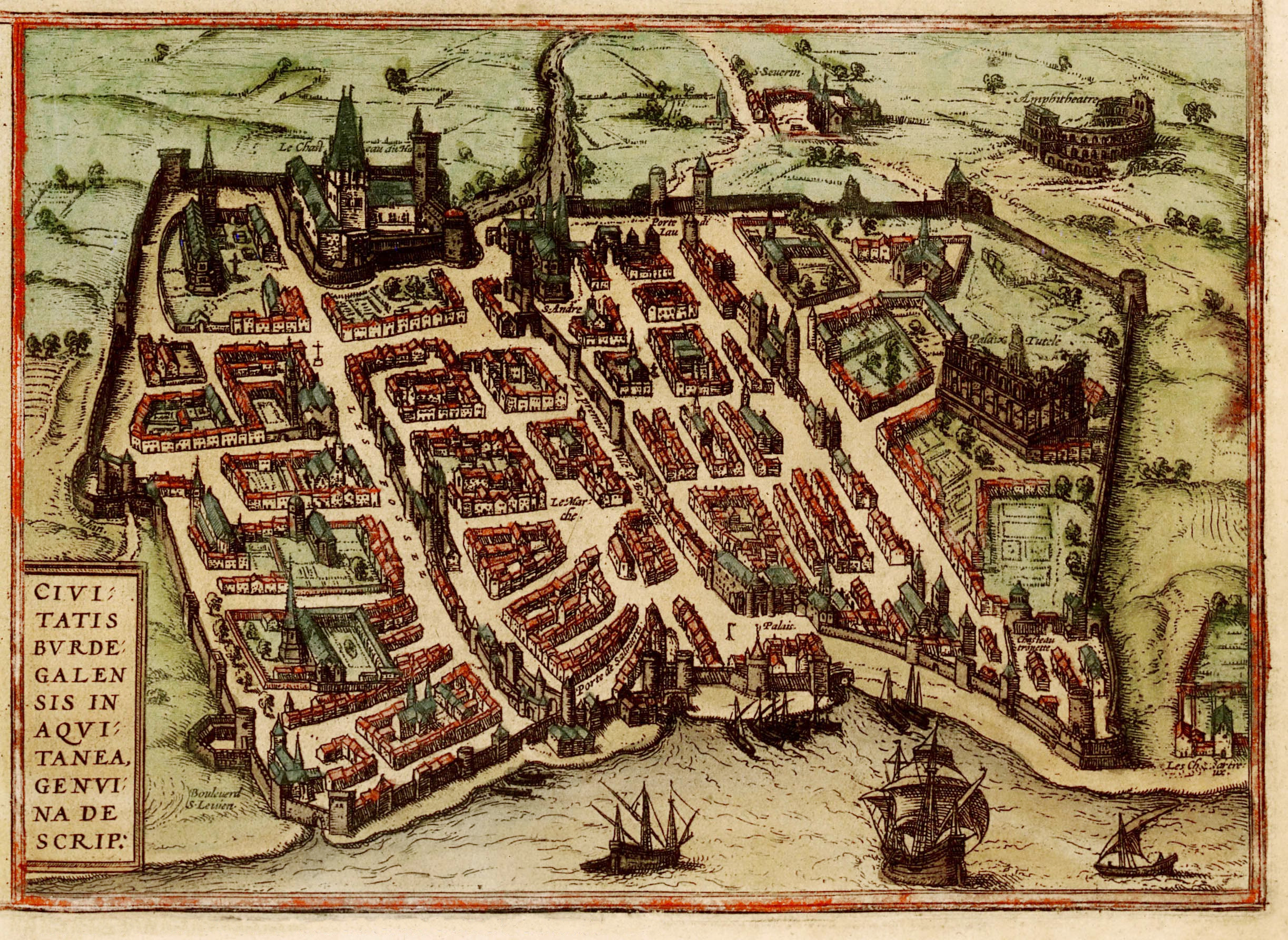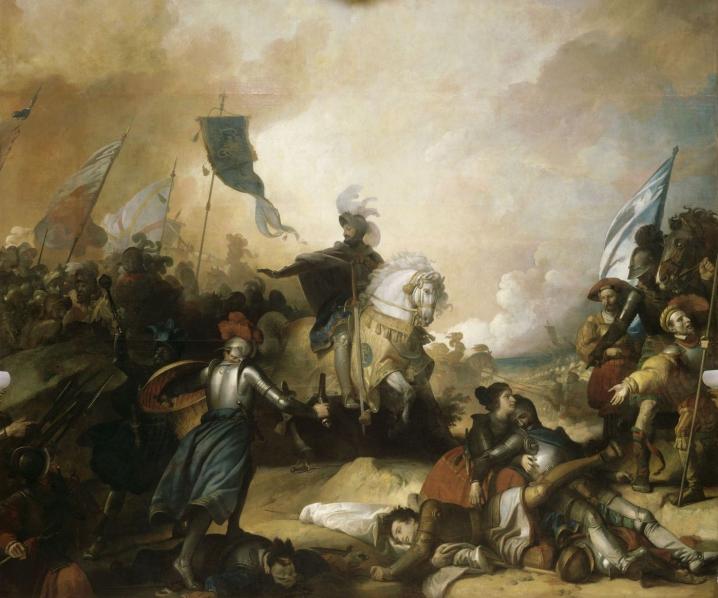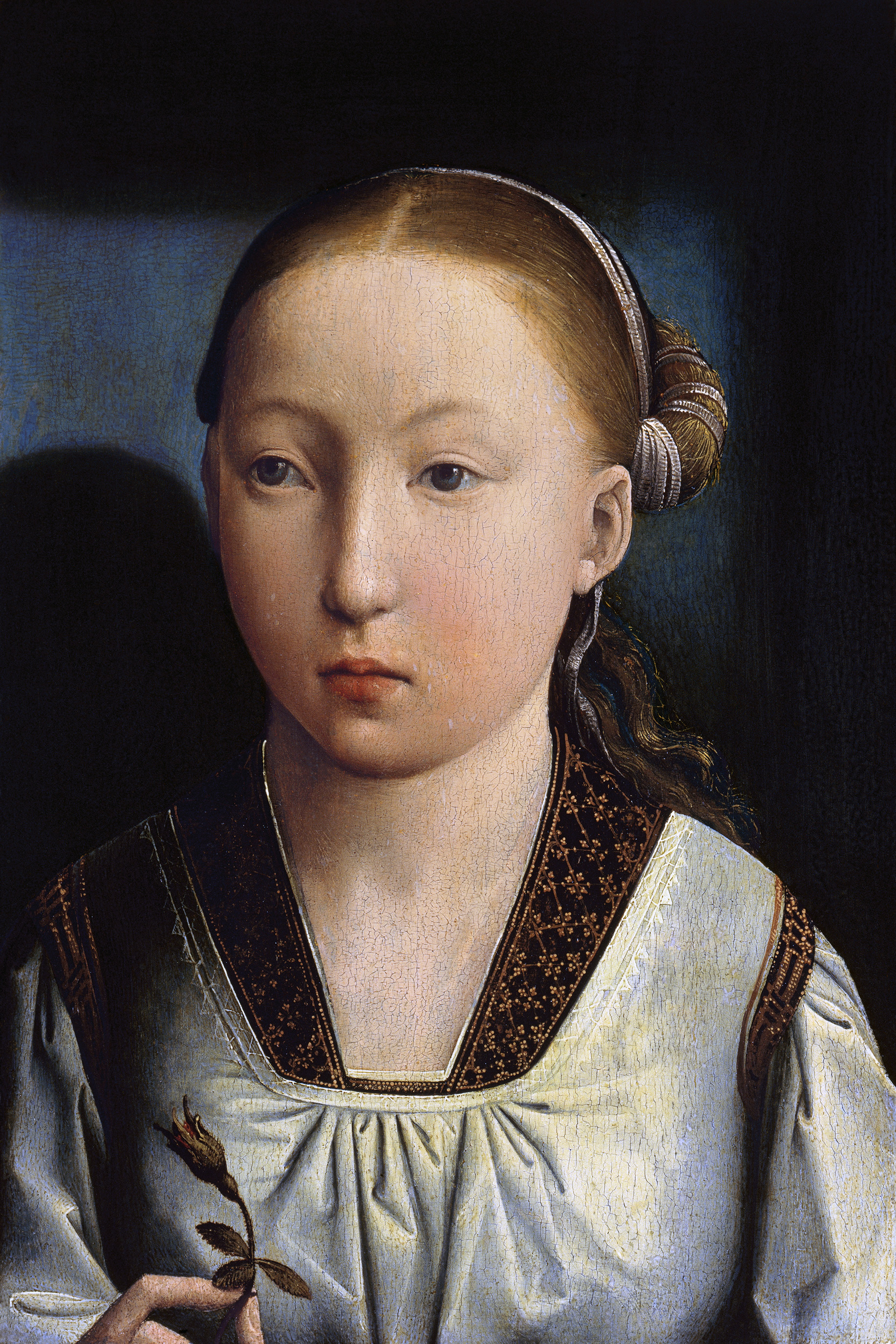|
Gabriel De Gramont
Gabriel de Gramont (1486–1534) was a French Roman Catholic bishop and cardinal. Biography Gabriel de Gramont was born in Gascony in 1486, the son of Roger de Gramont, ''signeur'' of Bidache, and Eléonore de Béarn. His brother, Charles de Gramont was the Archbishop of Bordeaux. Early in his life, he was ordained as a deacon. On 25 June 1515 he was elected Bishop of Couserans. He was transferred to the see of Tarbes on 19 September 1524. He occupied that see until his death. He was ''maître des suppliques'' under Francis I of France. He was promoted to the metropolitan see of Bordeaux. In 1525, the queen regent, Louise of Savoy sent Bishop Gramont to Spain to secure the freedom of Francis I. In 1526, he was imprisoned by Charles V, Holy Roman Emperor, who was angry at his role in founding the League of Cognac; when England and France arrested the imperial ambassadors, the emperor ordered Bishop Gramont released. Returning to the Kingdom of France, he was despatch ... [...More Info...] [...Related Items...] OR: [Wikipedia] [Google] [Baidu] |
French People
French people () are a nation primarily located in Western Europe that share a common Culture of France, French culture, History of France, history, and French language, language, identified with the country of France. The French people, especially the native speakers of langues d'oïl from northern and central France, are primarily descended from Roman people, Romans (or Gallo-Romans, western European Celts, Celtic and Italic peoples), Gauls (including the Belgae), as well as Germanic peoples such as the Franks, the Visigoths, the Suebi and the Burgundians who settled in Gaul from east of the Rhine after the fall of the Roman Empire, as well as various later waves of lower-level irregular migration that have continued to the present day. The Norsemen also settled in Normandy in the 10th century and contributed significantly to the ancestry of the Normans. Furthermore, regional ethnic minorities also exist within France that have distinct lineages, languages and cultures such ... [...More Info...] [...Related Items...] OR: [Wikipedia] [Google] [Baidu] |
Charles V, Holy Roman Emperor
Charles V (24 February 1500 – 21 September 1558) was Holy Roman Emperor and Archduke of Austria from 1519 to 1556, King of Spain (as Charles I) from 1516 to 1556, and Lord of the Netherlands as titular Duke of Burgundy (as Charles II) from 1506 to 1555. He was heir to and then head of the rising House of Habsburg. His dominions in Europe included the Holy Roman Empire, extending from Germany to northern Italy with rule over the Austrian hereditary lands and Burgundian Low Countries, and Spain with its possessions of the southern Italian kingdoms of Naples, Sicily and Sardinia. In the Americas, he oversaw the continuation of Spanish colonization and a short-lived German colonization. The personal union of the European and American territories he ruled was the first collection of realms labelled " the empire on which the sun never sets". Charles was born in Flanders to Habsburg Archduke Philip the Handsome, son of Maximilian I, Holy Roman Emperor and Mary of Burg ... [...More Info...] [...Related Items...] OR: [Wikipedia] [Google] [Baidu] |
Cardinal Priest
A cardinal is a senior member of the clergy of the Catholic Church. As titular members of the clergy of the Diocese of Rome, they serve as advisors to the pope, who is the bishop of Rome and the visible head of the worldwide Catholic Church. Cardinals are chosen and formally created by the pope, and typically hold the title for life. Collectively, they constitute the College of Cardinals. The most solemn responsibility of the cardinals is to elect a new pope in a conclave, almost always from among themselves, with a few historical exceptions, when the Holy See is vacant. During the period between a pope's death or resignation and the election of his successor, the day-to-day governance of the Holy See is in the hands of the College of Cardinals. The right to participate in a conclave is limited to cardinals who have not reached the age of 80 years by the day the vacancy occurs. With the pope, cardinals collectively participate in papal consistories, in which matters of importa ... [...More Info...] [...Related Items...] OR: [Wikipedia] [Google] [Baidu] |
Nuncio
An apostolic nuncio (; also known as a papal nuncio or simply as a nuncio) is an ecclesiastical diplomat, serving as an envoy or a permanent diplomatic representative of the Holy See to a state or to an international organization. A nuncio is appointed by and represents the Holy See, and is the head of the diplomatic mission, called an apostolic nunciature, which is the equivalent of an embassy. The Holy See is legally distinct from the Vatican City or the Catholic Church. In modern times, a nuncio is usually an Archbishop. An apostolic nuncio is generally equivalent in rank to that of ambassador extraordinary and plenipotentiary, although in Catholic countries the nuncio often ranks above ambassadors in diplomatic protocol. A nuncio performs the same functions as an ambassador and has the same diplomatic privileges. Under the 1961 Vienna Convention on Diplomatic Relations, to which the Holy See is a party, a nuncio is an ambassador like those from any other country. The Vienn ... [...More Info...] [...Related Items...] OR: [Wikipedia] [Google] [Baidu] |
Pope Clement VII
Pope Clement VII (; ; born Giulio di Giuliano de' Medici; 26 May 1478 – 25 September 1534) was head of the Catholic Church and ruler of the Papal States from 19 November 1523 to his death on 25 September 1534. Deemed "the most unfortunate of the popes", Clement VII's reign was marked by a rapid succession of political, military, and religious struggles—many long in the making—which had far-reaching consequences for Christianity and world politics. Elected in 1523 at the end of the Italian Renaissance, Clement came to the papacy with a high reputation as a statesman. He had served with distinction as chief advisor to Pope Leo X (1513–1521, his cousin), Pope Adrian VI (1522–1523), and commendably as gran maestro of Florence (1519–1523). Assuming leadership at a time of crisis, with the Protestant Reformation spreading, the Church nearing bankruptcy, and large foreign armies invading Italy, Clement initially tried to unite Christendom by making peace among the m ... [...More Info...] [...Related Items...] OR: [Wikipedia] [Google] [Baidu] |
Bordeaux Cathedral
Bordeaux Cathedral, officially known as the Primatial Cathedral of St Andrew of Bordeaux (), is a Catholic Church, Catholic church dedicated to Saint Andrew and located in Bordeaux, France. It is the seat of the Archbishop of Bordeaux-Bazas, Archbishop of Bordeaux. In 1998, UNESCO designated the Routes of Santiago de Compostela in France as a World Heritage Site, including the three main churches of Bordeaux: the Basilica of Saint Severinus of Bordeaux, basilica of St Severinus, the Basilica of St. Michael, Bordeaux, basilica of St Michael and the cathedral of St Andrew. History Carolingian and Romanesque church A church of Saint-André was first mentioned in Bordeaux in documents dating from 814, in the Carolingian period. This church was probably part of group of churches, including the Basilica of Saint Severinus of Bordeaux and Notre-Dame-de-la-Place, located in the old castrum or Roman fortified town. It appears more officially in 1096 in a document from the chanceller ... [...More Info...] [...Related Items...] OR: [Wikipedia] [Google] [Baidu] |
Cathedral Chapter
According to both Catholic and Anglican canon law, a cathedral chapter is a college of clerics ( chapter) formed to advise a bishop and, in the case of a vacancy of the episcopal see in some countries, to govern the diocese during the vacancy. In the Catholic Church their creation is the purview of the Pope. They can be ''numbered'', in which case they are provided with a fixed prebend, or ''unnumbered'', in which case the bishop indicates the number of canons according to the ability of diocesan revenues to support them. These chapters are made up of canons and other officers, while in the Church of England chapters now include a number of lay appointees. In some Church of England cathedrals there are two such bodies, the lesser and greater chapters, which have different functions. The smaller body usually consists of the residentiary members and is included in the larger one. Originally, the term "chapter" referred to a section of a monastic rule that was read out daily dur ... [...More Info...] [...Related Items...] OR: [Wikipedia] [Google] [Baidu] |
Holy See
The Holy See (, ; ), also called the See of Rome, the Petrine See or the Apostolic See, is the central governing body of the Catholic Church and Vatican City. It encompasses the office of the pope as the Bishops in the Catholic Church, bishop of the apostolic see, apostolic episcopal see of Diocese of Rome, Rome, and serves as the spiritual and administrative authority of the worldwide Catholic Church and Vatican City. Under international law, the Legal status of the Holy See, Holy See holds the status of a sovereign juridical entity. According to Sacred tradition, Catholic tradition and historical records, the Holy See was founded in the first century by Saint Peter and Paul the Apostle, Saint Paul. By virtue of the doctrines of Primacy of Peter, Petrine and papal primacy, papal primacy, it is the focal point of full communion for Catholics around the world. The Holy See is headquartered in, operates from, and exercises "exclusive dominion" over Vatican City, an independent c ... [...More Info...] [...Related Items...] OR: [Wikipedia] [Google] [Baidu] |
Charles IV, Duke Of Alençon
Charles IV (1489 – 11 April 1525), duke of Alençon, was a French prince of the blood (''prince du sang''), military commander, governor and courtier during the reigns of Louis XII and Francis I. Born into the House of Valois-Alençon, Charles (known by his title of Alençon) was a distant relation of the royal family, but one of the closest agnates. After the ascent of Francis I in 1515, he was the heir presumptive until the birth of the king's first son in 1518. He undertook his early military service in the later campaigns of Louis XII. He fought at the recapture of Genoa in 1507, and the decisive defeat of the Venetians at Agnadello in 1509. That year he was married to Marguerite, the sister of the future king Francis I. At the ascent of Francis in 1515, he saw combat as the commander of the rear-guard at the famous battle of Marignano at which the Swiss army was annihilated, restoring French control over Milan. In the coming years he participated in various court fe ... [...More Info...] [...Related Items...] OR: [Wikipedia] [Google] [Baidu] |
Marguerite De Navarre
Marguerite de Navarre (, ''Marguerite d'Alençon''; 11 April 149221 December 1549), also known as Marguerite of Angoulême and Margaret of Navarre, was a princess of France, Duchess of Alençon and Berry, and Queen of Navarre by her second marriage to King Henry II of Navarre. Her brother became King of France, as Francis I, and the two siblings were responsible for the celebrated intellectual and cultural court and salons of their day in France. Marguerite is the ancestress of the Bourbon kings of France, being the mother of Jeanne d'Albret, whose son, Henry of Navarre, succeeded as Henry IV of France, the first Bourbon king. As an author and a patron of humanists and reformers, she was an outstanding figure of the French Renaissance. Samuel Putnam called her "The First Modern Woman". Early life Marguerite was born in Angoulême on 11 April 1492, the eldest child of Louise of Savoy and Charles, Count of Angoulême. Her father was a descendant of Charles V, and would thu ... [...More Info...] [...Related Items...] OR: [Wikipedia] [Google] [Baidu] |
Catherine Of Aragon
Catherine of Aragon (also spelt as Katherine, historical Spanish: , now: ; 16 December 1485 – 7 January 1536) was List of English royal consorts, Queen of England as the Wives of Henry VIII, first wife of King Henry VIII from their marriage on 11 June 1509 until its annulment on 23 May 1533. She was Princess of Wales while married to Henry's elder brother, Arthur, Prince of Wales, for a short period before his death. Catherine was born at the Archbishop's Palace of Alcalá de Henares, and was the youngest child of Isabella I of Castile and Ferdinand II of Aragon. She was three years old when she was betrothed to Arthur, the eldest son of Henry VII of England. They married in 1501, but Arthur died five months later. Catherine spent years in limbo, and during this time, she held the position of ambassador of the Aragonese crown to Kingdom of England, England in 1507, the first known female ambassador in European history. She married Henry VIII shortly after his accession i ... [...More Info...] [...Related Items...] OR: [Wikipedia] [Google] [Baidu] |
Henry VIII Of England
Henry VIII (28 June 149128 January 1547) was King of England from 22 April 1509 until his death in 1547. Henry is known for his Wives of Henry VIII, six marriages and his efforts to have his first marriage (to Catherine of Aragon) annulled. His disagreement with Pope Clement VII about such an annulment led Henry to initiate the English Reformation, separating the Church of England from papal authority. He appointed himself Supreme Head of the Church of England and dissolution of the monasteries, dissolved convents and monasteries, for which he was List of people excommunicated by the Catholic Church, excommunicated by the pope. Born in Greenwich, Henry brought radical changes to the Constitution of England, expanding royal power and ushering in the theory of the divine right of kings in opposition to papal supremacy. He frequently used charges of treason and heresy to quell dissent, and those accused were often executed without a formal trial using bills of attainder. He achi ... [...More Info...] [...Related Items...] OR: [Wikipedia] [Google] [Baidu] |








